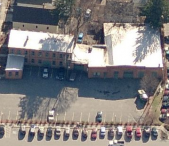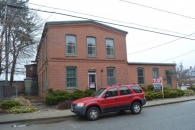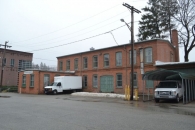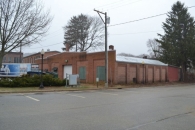Mill Record Killingly
RETURN TO ‘FIND MILLS’Disclaimer: Content for these properties was compiled in 2014-2017 from a variety of sources and is subject to change. Updates are occasionally made under Property Information, however the Connecticut Trust for Historic Preservation (dba Preservation Connecticut) makes no representation or warranty that the information is complete or up-to-date.
- Complex Name (Common)
- E. Pilling & Co., Assawaga Mill
- Complex Name (Historic)
-
- E. Pilling & Co., Assawaga Mill
- Address or Location
- 113 School Street, Danielson, Killingly
- County
- Windham
- Historic Designation
- Associated Mill Community
- n/a
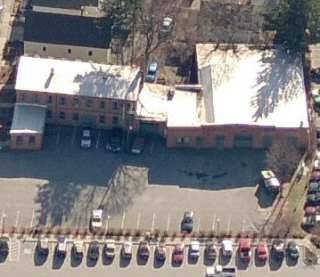
- Historic Information
Companies Associated w/Complex
- Aspinock Knitting Company ca. 1889-ca. 1897
- E. Pilling & Co., Assawaga Mill ca. 1883-ca. 1889
- School Street Garage ca. 1920-late 20th c.
- Uncas Knitting Co. ca. 1899-ca. 1905
- Williamsville Buff Mfg. Co. ca. 1913-ca. 1928
- Wilson Mfg. Co. ca. 1897-ca. 1899
Use (Historic)
Largest Documented Workforce
25 (1899)
Historic Narrative
The Assawaga Mill was originally erected ca. 1883 for the hosiery manufacturer E. Pilling and Company. This firm was organized in 1883 by brothers Emmanuel and Christopher C. Pilling, who were also responsible for erecting a larger hosiery mill on the site of what would become the Connecticut Mills plant on Connecticut Mills Avenue. By 1889, E. Pilling and Company had consolidated all of its production in its larger plant and the School Street mill was occupied by the Aspinock Knitting Company. The latter firm produced a line of seamless half hose and other cotton and wool knit goods and in 1889 employed 40 workers managing about 50 knitting machines. Around 1897, the School Street mill was acquired by brothers Herbert E. and Louis L. Wilson, who had established the H.E. Wilson Company ca. 1893. In his youth, Herbert E. Wilson had spent three years working for E. Pilling and Company, yet struck out on his own after rising to the position of foreman. The H.E. Wilson Company factory was originally located at the northern end of Water Street and the Wilson brothers appear to have maintained both this and the School Street mill between 1897 and 1899. In 1899, the H.E. Wilson Company was reorganized as the Uncas Knitting Company and the firm consolidated all of its operations and 25 employees on School Street. The new firm posted an office address of 22 Thomas Street in New York, New York, and was led by Charles P. Backus, president; William H. Putnam, treasurer; Louis L. Wilson, secretary; and Herbert E. Wilson, superintendent. Herbert Wilson left the firm in 1901, at which time primary control of day-to-day operations passed to his brother. The Uncas Knitting Company met with limited success and fell into receivership by 1904. The company ceased production around the same time, yet retained its School Street property into the early 1910s. By 1913, the factory was occupied by the Williamsville Buff Manufacturing Company, which was led by owner and superintendent Harold B. Atwood and produced buffing wheels for the silverware industry. Atwood sold the Williamsville Buff Manufacturing Company to W. Irving Bullard, treasurer and manager of the E.H. Jacobs Manufacturing Company, in 1927, at which time production was shifted to the E.H. Jacobs plant across the street. The former Assawaga Mill building continued to be held and operated by Atwood, who throughout the 1920s had also maintained an automobile garage on the premises. Known as the School Street Garage, this use perpetuated into the second half of the 20th century.
- Architectural Information
Number of Existing Buildings
Five (5) primary blocks.
Dates of Construction
ca. 1883, ca. 1920.
Architect
n/a
Builder
n/a
Building Type
Architectural Description
The former Assawaga Mill is comprised of five adjoining blocks located on the west side of School Street roughly 200’ south of its intersection with Center Street. The original building is a two-story, 30’ x 72’ red brick structure erected ca. 1883. This has a brick foundation, segmental-arched window openings with stone sills, a denticulated brick cornice, and a front-facing low-pitch gable roof. A detailed brick beltcourse divides the building’s first and second stories. The three-bay façade (east elevation) has a centered entry and is set in a segmental-arched opening. A loading bay with a pair of wood-paneled doors is located on the first story of the north elevation. The windows throughout the building are six-over-six double-hung wood sash. A one-story, 30’ x 19’ red brick boiler house was erected concurrent to the construction of the primary block. This abuts the main building’s western elevation and has a shed roof. A loading bay with roll-up style door fills the entirety of its north elevation. A pair of one-story brick blocks constructed ca. 1920 adjoin the west elevation of the boiler house. These are of brick pier construction and measure roughly 42’ x 18’ and 63’ x 70’ respectively. The two blocks have a unified façade (north elevation), this characterized by wide bays framed by brick piers and a stepped brick parapet. A garage-style entry with a roll-up door is centered on the façade. The final block associated with the plant was erected at the northeast corner of the original manufacturing building ca. 1920. This addition is a one-story, 28’ x 18’ red brick ell with a side-gabled roof. The block is of similar detailing to the ca. 1890 portions of the plant and has a pass-through entry door on the northern end of its east elevation.
Exterior Material(s)
Structural System(s)
Roof Form
Roof Material
Power Source
Condition
Fair
Condition Notes
The factory is in overall fair condition. Although sections of the plant show some staining and deterioration along their exterior walls the majority of the plant appears to retain its original wood windows and is structurally sound and well maintained.
- Property Information
-
Specific Location
One 0.67-acre parcel (113 School Street) on the west side of School Street roughly 200’ south of its intersection with Center Street.
Adjacent To
Exterior Visible from Public Road?
Yes
Parcel ID / Assessor Record Link
- 198/165 / Link →
Acreage
0.67
Use (Present)
- Sources
-
Form Completed By
Lucas A. Karmazinas
Date
04/13/2015
Bibliography
- List of Connecticut Manufacturers, 1922, 1924, 1930, 1932.
- Directory of Connecticut State Manufacturers, 1936, 1939.
- Industrial Directory of Connecticut, 1947.
- Register of War Production Facilities in Connecticut, 1951.
- Map of Windham County, E.M. Woodford, 1855.
- Atlas of Windham County, O.W. Gray, 1869.
- Sanborn Map Company, 1884, 1892, 1897, 1903, 1911, 1927, 1939.
- Hartford Courant, 1899, 1901, 1904, 1927.
- A History of Windham County, Connecticut; Bayles, Richard M., ed., 1889.
- A Modern History of Windham County, Connecticut; Lincoln, Allen B., 1920.
- Representative View(s)Click on image to view full file
